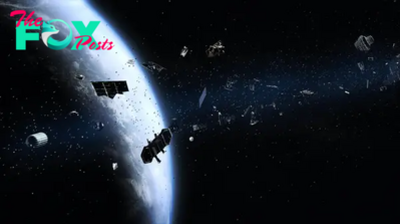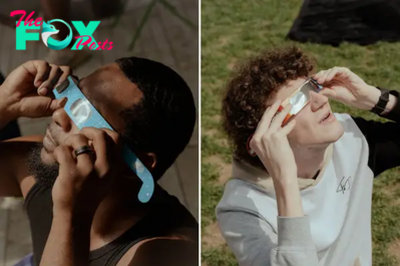Science
The Bliss of Seeing the Eclipse From Cleveland
The best outfit of the day was worn by a man in an astronaut’s jumpsuit done up in Cleveland Browns orange, with the word “Brownstronaut” across the back.
The best animal of the day was the perfect bald eagle at Cleveland’s Museum of Natural History, roosting high in his enclosure, taking in the morning sunlight and warmth, heedless of the fact that the source of that light would, before the afternoon was out, be obscured.
The best quote of the day came from my 21-year-old, Paloma, as we gathered with thousands of others on the lawn of the Great Lakes Science Center, when she turned to me and said, simply, “Thank you.” (She also said, “This was so worth missing class for,” though that one moved me less.)
Paloma and I were just two of an estimated one million people who flocked to northeastern Ohio for the Women’s Final Four Games of the NCAA basketball tournament, opening day for Major League Baseball’s Cleveland Guardians, and—much more transcendently—the total eclipse of the sun, which began at 1:59 PM EDT and reached totality at 3:13 PM EDT.
Read More: Why Your Head and Eyes Hurt After Viewing the Eclipse
“Look at ‘er go,” called out one woman in the crowd as the moon took steadily bigger bites out of the sun.
“I literally have a tear,” said someone else.
A DJ outside of Nuevo Modern Mexican & Tequila Bar was playing thumping hip-hop music up until the moment of totality, when he switched to a gentle cover of the Beatles’ “Here Comes the Sun.” Cleveland Browns Stadium, hard up against the Science Center lawn, was plunged into darkness. Titan, a four-year-old miniature poodle, yapped in the quiet and the gloaming.
“He does this when he wants people in a crowd to notice him,” said Ashwani Sharma, 31, a software engineer for Chipotle, as he pulled Titan close.
Sharma and his friend, Simran Pripsingh, 31, a software engineer for JPMorgan Chase & Co., were working remotely in a coffee shop in Columbus, Ohio this morning, which was outside of the path of totality, and on a whim, drove 142 miles northeast to take in the full show.
“We just kind of decided it was worth the 90-minute drive to see it all,” said Pripsingh.
It was worth that and much more. To take in an eclipse is to understand why the ancients were terrified and thrilled and mystified and awestruck as the great cosmic choreography played out, and one of life’s certitudes—that the sun would rise in the morning and set in the evening and otherwise remain in the sky throughout that long procession—came undone. It’s the deep blackness of the moon that gives the eclipse its power to frighten and to elicit applause and cheers even in a 21st-century crowd, as the first flash of sunlight reappeared.
Read More: Here’s What a Solar Eclipse Looks Like From Space
More from TIME
“It’s a reminder that there is so much more to life than meets the eye,” said Lolita Strong, 57, an Uber driver who planned to pull over wherever she was when totality arrived. “When things like this happen, you get a chance to think about the sun and the moon and how man could not have made that.”
That sentiment was echoed by a street preacher who shouted into a microphone after the eclipse that it was a spectacle that was imagined by God, created for us by God. And while Astronomy and faith don’t often embrace, they do, on the occasion of a total solar eclipse, at least shake hands. The moon is 400 times smaller than the sun, but also 400 times closer to us, meaning the two bodies appear to be the same size in the sky. It’s that sweet synchrony that makes the eclipse the exquisite phenomenon it is.
One can believe in what one will—Astronomy, religion, the mere coincidence of the cosmic clockworks. A solar eclipse brings all of them rushing forward.
My Paloma will be a middle-aged woman when the next eclipse touches the continental U.S., in 2044. I would like to think I’ll be a grandfather. The moon and the sun will be much as they are and much as they’ve been for more than four billion years—still there, still shining, still doing their dance.
-

 Science6h ago
Science6h agoDeepest blue hole in the world discovered, with hidden caves and tunnels believed to be inside
-

 Science7h ago
Science7h agoBlack hole 'traffic jams' are forcing cosmic monsters to collide, new study finds
-

 Science7h ago
Science7h agoResearchers just found more than 1,000 new solar system objects hiding in plain sight
-
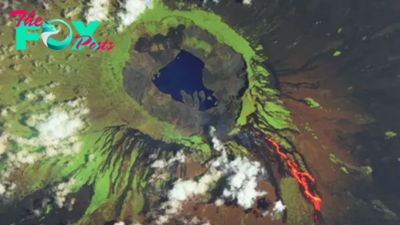
 Science19h ago
Science19h agoEarth from space: Lava bleeds down iguana-infested volcano as it spits out toxic gas
-
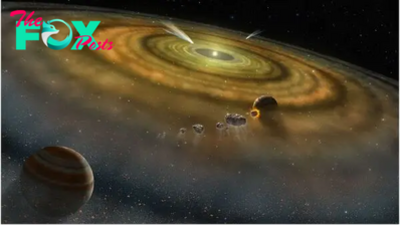
 Science1d ago
Science1d agoJupiter may be the reason why Earth has a moon, new study hints
-
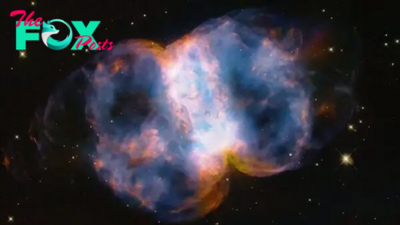
 Science1d ago
Science1d agoSpace photo of the week: Little Dumbbell Nebula throws a wild party for Hubble telescope's 34th anniversary
-
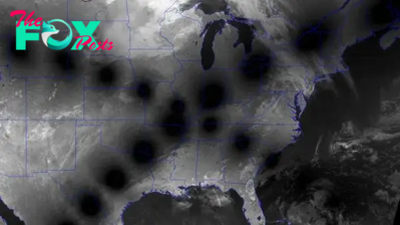
 Science2d ago
Science2d agoEclipse from space: Paths of 2024 and 2017 eclipses collide over US in new satellite image
-

 Science4d ago
Science4d agoHundreds of black 'spiders' spotted in mysterious 'Inca City' on Mars in new satellite photos




